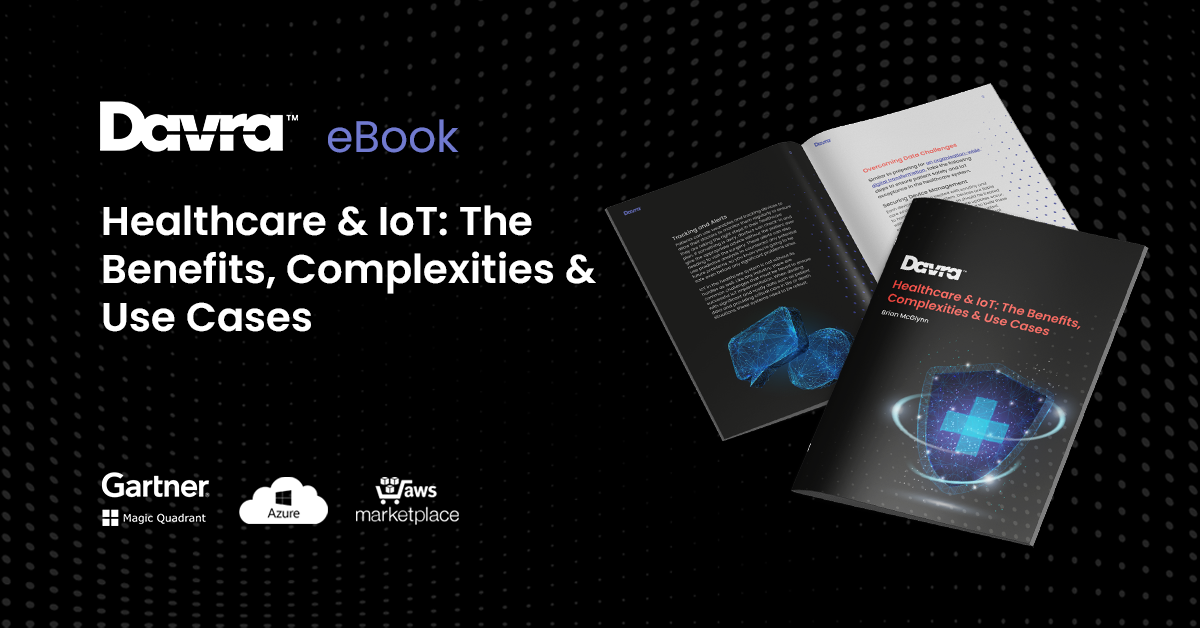IoT in Healthcare Use Cases eBook
Download Your Free IoT in Healthcare Use Cases eBook
Read More


In distributed computing, the bleeding edge reigns champion, but old standbys deserve love too. This fact is especially true of the select few go-to protocols that keep the Industrial Internet of Things, or IIoT, chugging along behind the scenes. Open Platform Communications, or OPC, may not be a shiny newcomer in the Enterprise IoT arena, but unlike some protocols, its relevance is growing with time.
What makes OPC age so well? This client-server standard has evolved way beyond its earliest form. Here’s why that’s such a good thing for fabricators, labs, other manufacturing companies and of course, IoT Platforms.
OPC is a series of standards that date back to the 1990s. It was first implemented for use with Microsoft software components and document-linking technologies. Today, the framework offers a number of handy rules and interfaces for sharing process data in real-time.
As a system control standard, OPC closes the chasms between many industrial devices and the IoT apps that command them. Since it’s also a vendor-agnostic telecommunication spec, it facilitates consistent, low-fuss data exchange between departments, networks and partners.
OPC’s client-server setup gives the user lots of power. After creating an OPC server with a target device, such as an IoT data collector, a manufacturer can count on the fact that any authorized OPC-compliant client will be able to connect and grab live records. Since the implementation of the server is up to the stakeholder, it’s easier to include custom security, interface and control features.
These practices allow for some very interesting possibilities. Want to build a sleek, modular smart factory that grows to meet demand? Write a server to get things running, and then add new clients as needed. When sharing data is as simple as making a new network connection, big IoT endeavors start shaping up way faster. Since one of the goals of Industry 4.0 is to build systems that work sans intervention, OPC’s highly adaptable split model is perfect for bespoke projects.
The different OPC standards deal with a variety of tasks common to process control and communication, such as:
• Retrieving archived data from databases using encryption and access restrictions
• Sending control commands to specific devices
• Scheduling, running and monitoring batch jobs
• Sharing complex information, such as XML or raw binary
• Configuring, managing and exchanging data between servers
• Setting alarms and automating event notifications
Why can’t companies accomplish these tasks alone? While it’s true that modern manufacturers attract top-tier talent, IoT deployments aren’t only about programming skills. New solutions built from the bottom up stand a high chance of retreading old ground. Their tendency to produce errors can make them a massive waste of time.
Industry 4.0 means nothing without reliable connectivity. It’s not at all atypical for fabrication lifecycles to span multiple facilities, time zones and processes. For the left hand to know what the right is doing, these interdependent elements need to be able to communicate seamlessly. Such interactions can’t be beholden to constant bugs, janky hacks or systems with heavy bandwidth restrictions.
When manufacturing data starts flowing, it tends to do so at lightning speed, and IIoT implementations must be ready. After all, entire enterprises are on the line. Although using OPC effectively demands knowledge, it’s the closest most fabrication firms ever get to plug-and-play IoT networks that they can depend on.
The OPC Data Access specification plays a vital part in making industrial process control work. It defines a simple framework where all real-time data records include a trio of important attributes. In addition to retrieving a current value, such as a temperature readout from a data source on a factory floor, clients also get a measurement timestamp and a quality, or confidence, estimate.
Why is it important to know so much about the measurement process? No sensor is infallible. OPC Data Access empowers enterprises to watch the watchers to be certain they’re doing their jobs correctly.
Timestamping gives users a leg up when it comes to bringing lots of data together from independent sources. Thanks to the historical proliferation of wrappers and interfaces made to bridge gaps between OPC and other tools, this straightforward format has adherents that include major industry players and leading IoT vendors.
For an industry protocol, OPC packs some pretty neat features under the hood, but what about tomorrow and beyond? Standards need to stay on top of changing production practices and new tech to remain relevant. If OPC fell behind on the fundamentals, then all of the cool perks in the world couldn’t hope to save it from the annals of obsoletion.
Fortunately for its fans, this protocol continues to advance. The latest variant, OPC Unified Architecture, or OPC UA, revolves around an open-source, cross-platform design. It draws on the best aspects of earlier iterations, such as the OPC DA three-part record. OPC UA further improves these ideas by implementing them in a truly platform-agnostic way and augmenting the data-modeling options. Users can experiment and build utilizing Java, Node JS, Python, C or other languages with a range of freely available software stacks.
This flexibility is just the beginning of OPC UA’s strength. Other crucial features include single- or multi-threaded operation for different hardware types, redundancy, and heartbeat detection that lets clients and servers bounce back from interrupted connections. OPC natively supports web services, so building dashboards is no sweat. It’s also possible to run highly minified servers with tiny memory footprints on individual chips and programmable logic controllers.
Working with OPC is a great way to build an industrial IoT with serious staying power and agility. As the protocols develop and change, however, many manufacturers come up against some tricky quandaries:
Which OPC standard is best for forward compatibility?
How can new deployments be brought into alignment with current security rules?
What features and integrations should programmers add to create lightweight, robust servers
Don’t feel stuck on these tough questions. Discover the best ways to implement OPC-compliant fabrication processes that actually realize the promise of connected Industry 4.0. Get started by chatting with a Davra enterprise IoT architect.
Brian McGlynn, Davra, COO
Download Your Free IoT in Healthcare Use Cases eBook

Davra IoT is the only Industrial IoT Platform Available on AWS Marketplace
Read MoreThe Collaboration of Humans & Robots Has Created The Cobot
Read More